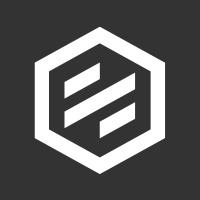As manufacturing technologies evolve, they present new opportunities for manufacturers throughout the product life cycle. More and more product developers are choosing to pivot from one production method to another or are transitioning between them to suit their needs.
In product development, parts or products generally move through three phases of evolution: first, prototyping; second, low-volume production; then third—and final—serial production. In each case, the goal is to move smoothly from each development phase to the next, refining the product and its manufacturability. Overall, the objective is to minimise the total time and cost of the overall process, bringing a product from the initial concept to serial production smoothly and efficiently and as quickly and cost-effectively as possible. 3D printing is often a great entry route to prototyping plastic parts mainly because it is a quick, flexible, and cost-effective process. But what happens once you are ready to move forward with your product development plan? Many product developers are successfully turning towards injection moulding, but not every project is suitable for every production method. To decide whether injection moulding is ideal for you, you need to consider several factors:
Cost
Many factors affect the cost of a part; a significant amount usually is tooling for injection moulding. Components are created by injecting molten plastic resin into the negative cavity of a tool, also known as a mould. If tooling is a big investment, it will only be economical on a cost-per-part basis if you produce many identical parts, often numbering in the hundreds or thousands. Another factor will be the time to make each part and the number that you will need. Your final decision may come down to balancing the number of parts you need against the cost of tools.
At Protolabs, we have reduced this cost and time by streamlining our processes so that you can have tooling in just 1 to 15 days. This is an excellent option if you need volumes or a batch quantity of anything from a few hundred to 150,000 parts. Our solution is often used in industry for mass customisation of parts if you want to segment your product for different market segments. With 3D printing, there is no tooling; you can print what you design and can print almost any design you want. It makes sense if you want a few hundred parts or need several different versions of those parts.
Design
Better design can reduce any production method's costs, so a deep understanding of the final manufacturing process is vital when prototyping. If your component isn't complex and has a fairly simple geometry, then injection moulding will be more cost-effective as volumes increase. Conversely, 3D printing is a better option if you require complex geometry.
Surface finish is an important consideration when choosing a production method. 3D printing creates parts by layering material each step at a time so the finished surface can be ridged. Although you can use vapour smoothing to level out the surface leading to a smooth finish, it is a secondary operation and will need to be factored into your thoughts. Injection moulding creates parts with a smooth surface because the material is poured into a single layer to create a virtually uniform smooth surface finish.
Material
The material you want your product to consist of should be a significant factor in your decision-making. The material choice can affect not only the cost of your product but also its performance and longevity. Only some production methods offer many material types; for example, more materials are available using injection moulding than 3D printing.
At Protolabs, we offer 100s of different resins for injection moulding, compared to 14 options as a standard for 3D printing. You can order more options for both processes, but again these are additional steps in your journey that you will need to consider.

